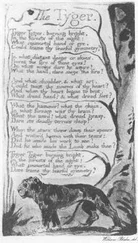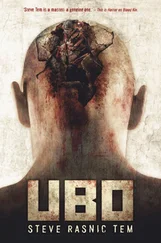It was at this point, or so he would conclude later, that he first became aware of the figures in the next room of the gallery, beginning to emerge from hiding, just their outlines peeking from the corridor, but when he turned and tried to take their measure, they were gone, and although he stood and waited, they did not reappear.
By the time he gave up looking for them the tour had moved on without him, and he had to hurry to catch up, feeling hot and uncomfortable as he did so, and wishing he had made the decision simply to carry his coat. He was always conscious of perspiring heavily inside his clothing, and, although he bathed regularly, worried about smelling.
“Eventually traces of the human figure began to appear in these huge, near-empty canvases. Perhaps not the figure itself, not at first, but the effects of its presence. It was coming out of hiding, it seems, but you might say it was being very cautious about the entire endeavor. The figure became tool and material, and eventually it became battleground.”
At the guide’s invitation the students spent some time with these images. Some nodded agreeably with what she had to say, and some had a skeptical air about them, but appeared careful to keep their own figures neutral, betraying no opinion. He dutifully traveled from painting to painting, and sometimes it felt like a journey of years. He had not heard of most of these artists’ names, but tried to memorize them so he could look them up later, find out what else they had done, read what they had to say for themselves.
Still, he felt an urge to leave the tour and seek out a Chagall, or a Soutine, one of the Jewish painters he liked so much, or even an expressionist like Robert Beauchamp, whose figures, with their nervousness and agitation, had become almost cartoonish in their attempts to recede and hide inside the paint. As for his own shy figures, he could still feel them lurking nearby, but thought it non-strategic to seek them out.
“There’s still some jokiness about the figure’s re-emergence, don’t you think? A kind of coyness that invites us in. I find that refreshing, don’t you? Art needn’t be so stuffy. It can look at itself with good humor.”
Perhaps he had no sense of humor when it came to art. Perhaps he was too serious about most things and that was his problem. His wife used to complain about his inappropriate joking, but she also understood that impulse of his came out of a belief that the world was a grim and serious place.
He felt a bit of palsy now in his right hand, and stared at it with eyes that did not focus well anymore. Between the two tendencies he was presented with an image of his hand with no clear lines, nothing firm to hold his flesh in. He felt his tears approaching, and stopped them by grabbing the hand firmly with its left partner, which held it decisively but tenderly in check.
He distracted himself from this localized drama by looking at the largest painting in the room. He didn’t recognize this part of the gallery and wasn’t aware of when the tour might have advanced here. At first he could see no figures in the painting, but then he found the one wavering line suggestive of a hesitant forward motion.
“For years the figure practically vanished from contemporary art.”
He continued to stare at the wavering line in the right third of the painting. He didn’t care for this kind of scraggly, wiggly art. He never had, except where someone like Beauchamp was concerned, who had this indefinable knack. For the most part, he could never find the emotion in this kind of work. But for some reason he felt this particular painting—in fact he found himself almost moved to tears. He saw more motion in that wavering line in the canvas than in his entire life, as it left its trace in the chaos, as it made its mark.
He looked at the artist’s name. Daniel Richter. A German. The name wasn’t completely unfamiliar, but it was still one that hadn’t been on his radar. As he walked among the other Richter paintings, most of them larger-than-life size, he was impressed by their colors, explosive and alive with blood and neon, living now, and not in some memory of days before, and as more and more of the figures began to appear, coagulating out of the aggressive paint, but still hiding, or attempting to hide, it struck him that so many of the figures weren’t much more than outlines, really, and inside those recognizably human outlines floated pools and bursts of color. But it wasn’t a portrayal of exterior resemblance on these canvases, but of a peculiar sort of interior, the interior a medical technician might see in an MRI, or the auras of variously colored heat observable by means of some sort of specialized surveillance equipment, or from the cold and inhuman sensory apparatus of a heat-seeking missile now rapidly advancing on its all-too-vulnerable human targets.
For now he did not sense the shy figures he had encountered earlier—perhaps they were wandering the other galleries, reluctant to enter this one, as if worried they might dissolve within the intense colors and the brilliant lights.
But he had no time for this kind of fantastical speculation in any case. He was too busy examining the figures trapped within these paintings, or if not “figures,” the evidence that figures had once been there, and now these were the prints their bodies had left behind upon impact with the world, or, looked at another way, their medical records, and the documentation of their trauma.
Of course no one had asked him what he was doing here in the art museum. No one had spoken to him at all. But he had been formulating an answer. He really had no idea where his wife had gone. All too quickly the traces of her outside their small home had been erased. He had no idea where to find her, so he was looking here, examining these paintings for clues. It made no sense, but he was convinced it was the right thing to do.
When he returned home that evening he fixed himself a sandwich and carried it into the living room, and sat with it on the palm of his hand and did not eat it. He could feel it drying out on his weary, outstretched palm, but he could not bring himself to take it into his mouth. Eventually he laid the uneaten sandwich onto a side table alongside several books his wife was never able to finish reading, and sat some more, gazing around the room, trying to find additional traces of where she had been, what she had touched.
He remembered she sometimes sat in this chair and knitted at odd times during the day and night. Sometimes he would awaken in the middle of the night and her side of the bed would be empty. He would come downstairs and discover her sitting here knitting squares, putting together blankets and sweaters and various indecipherable soft objects. She said she just couldn’t sleep anymore. She said she had simply lost track of things and now had to figure things out.
After she died he had tried to learn how to knit without any success. He simply could not see how to create patterns, then recognizable objects, out of piles of seemingly limitless string. Instead he had sat here gingerly cupping a ball of yarn in each hand, as if he were holding eggs, as if showing some sort of reverence for the act would bring him understanding. But it never had.
He picked up one of the books she had left behind: Beloved , by Toni Morrison. He found the ornate metal bookmark she had inserted a third of the way through the book, a bookmark he had never seen before, but one so special he felt it must have been his wife’s way of honoring this particular volume. He remembered that she had talked about this novel, how much she had loved it, how anxious she had been to get to the next page. But he was sorry that he did not remember anything more specific than that about the book itself.
Читать дальше












